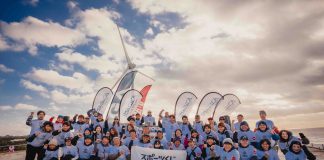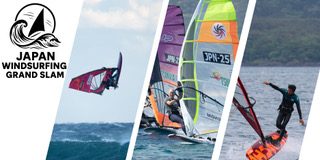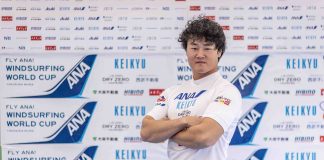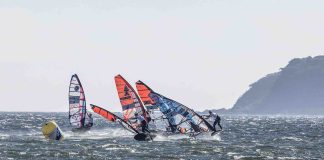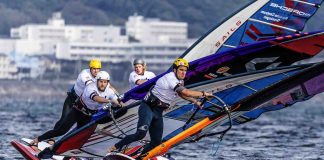スラロームボードはウェイブボードから生まれた
Slalom Board was born from a Wave Board
(※ Bilingual of Japanese and English)
そう、ドン吹いて、海面はぐちゃぐちゃで、ウェイブはできないけれど「でもウインドなら、きっと何かができるはず」と、そういう期待や熱意や執着心を核として、そのボードは生まれた。そしてウインドサーファーは、自然や海とより親密につながることが可能になった。
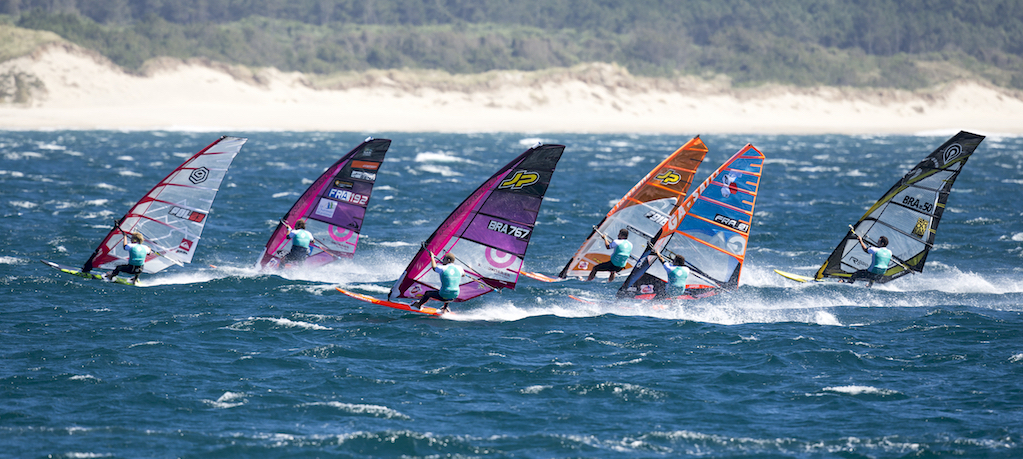
※The photos posted here are images. Not the one at the time.
※古い写真は無かったり、あっても使用できなかったり。故にここに掲載する写真はイメージです。
以前こんな原稿を書いたことがある───波は風によって生まれ、風が強まれば海面は荒れる。サーファーはそんな海からはいなくなる。でもウインドサーファーは「風も風波もあるのに海に出るのを諦めるわけにはいかない」
先達たちによって開発されたスラロームボードは、関連リグと共に進化を重ね、やがて強風ラフ海面を最も自由に、最も速く走れる無動力ビークルのひとつになった。
僕はそのことをある大会を通して確信した。
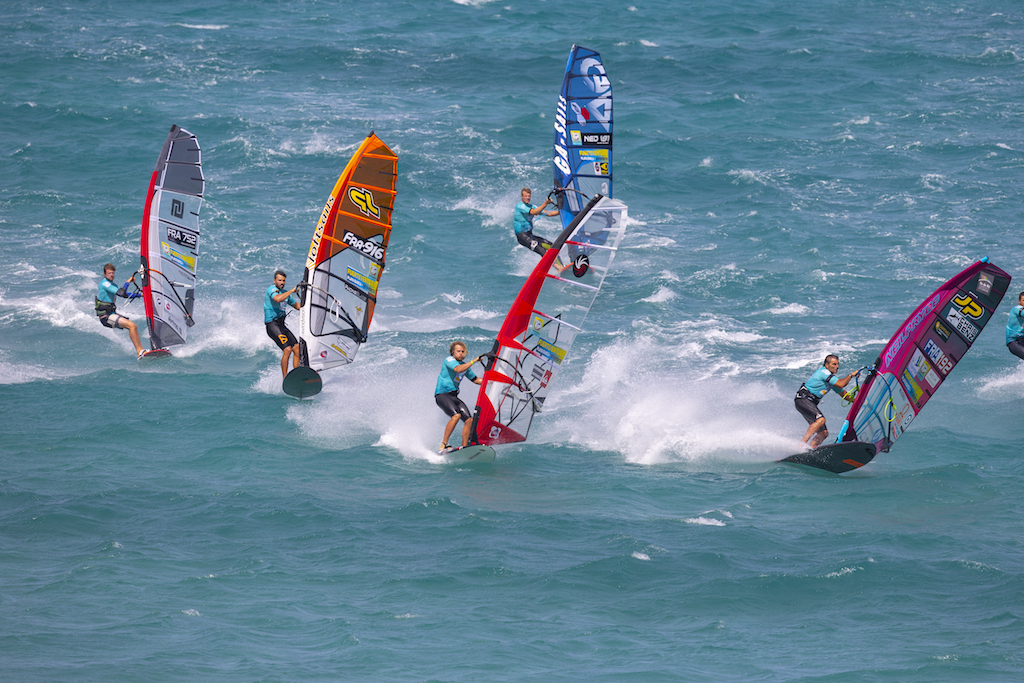
1993年までの10年間、御前崎白羽海岸では、毎年世界最大級のウインドイベント『サムタイム・ワールド・カップ』が開催されていた。コースレース、スラローム、ウェイブの3種目が行われるグランドスラム大会で、ビヨン・ダンカベック、アンダース・ブリンダル、ロビー・ナッシュ、ジェイソン・ポラコウなど(みんなスラロームにも出場した)当時ビッグネームと言われていた選手のほぼ全員が御前崎に集結した。そしてその大会期間中、最も風が強く吹いた日に行われるのがスラローム競技だった。
もちろん御前崎である。風が上がれば、波もグンとデカくなり、海は荒れる。だからこそ、そのタイミングで行うべきとされたのがスラロームで、ウェイブは荒れた海面が少し落ち着き始めた頃に行われるのが常だった。
『サムタイム───』におけるスラロームには数々の伝説がある。
マストオーバーの波で大会運営船が出港できず、ヘリコプターでブイを落としてレースしたとか。あまりの強風(60ノットオーバー)に手持ちのセイルでは間に合わず、3㎡台のセイルを2.8㎡くらいにカットして、ロベール・テリテオが海に出たとか。
そのセイルをもって爆風を切り裂く弾丸のごとく疾走したロベールが、リコールだかなんだか、とにかくジャッジの判定を不服とし、その腹いせにスラロームでバカジャンプ、マーク(ブイ)をフィンでぶち破ったとか。ビヨンとアンダースの熾烈なトップ争いや、浅野則夫のファイナル進出に日本のファンや取材陣が飛び上がり、目を潤ませたとか・・・。
───それから27年、スラロームギアは進化を重ね、当時とは全く違う乗り物になった。往時を知るあるプロ選手は言う。「今の道具をもってそこへ行けば、とんでもなく新鮮で、息を呑むほど高速の世界に到達できる」そう、昔とは比べものにならないくらいにラクに、そしてイージーに。今やスラロームボードはエキスパートだけのものではなく、みんなのものになったのだ。
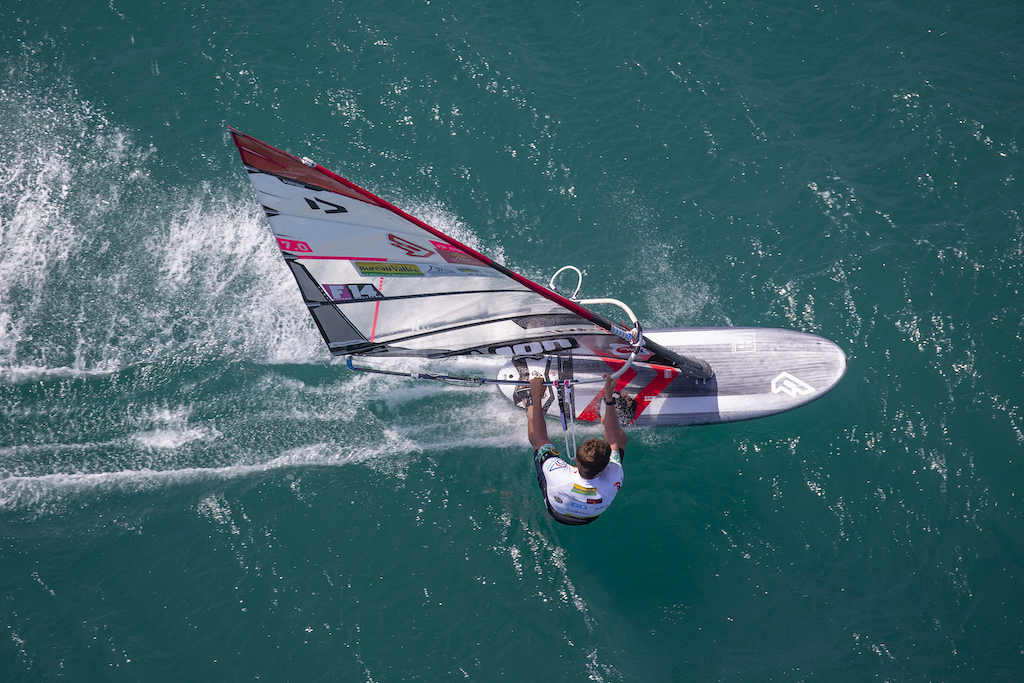
───────────── Windsurfing Magazine ────────────── ウインドサーフィン マガジン ─────────────
Windsurfing Story_01
Slalom Board was born from a Wave Board
Yes, the strong winds are blowing, the sea is messy, and we can’t do waveriding, but windsurfing can do something. The board was born with such expectations, enthusiasm and attachment. And windsurfers have become more intimately connected to nature and the sea.
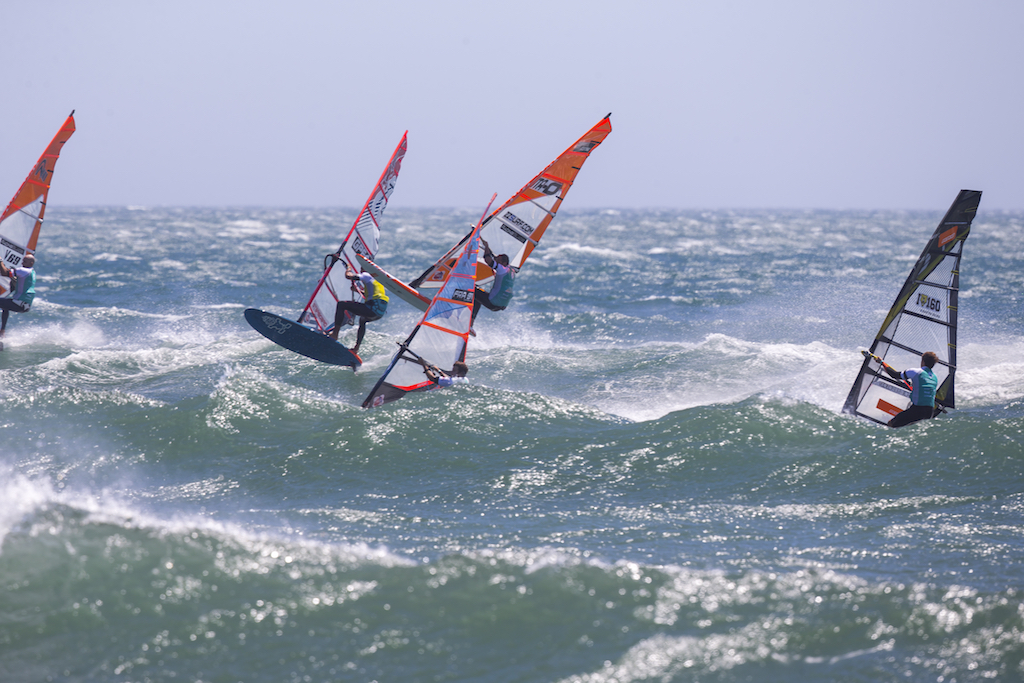
I’ve written this manuscript before ─── Waves are created by the wind, and if the wind intensifies, the sea surface becomes rough. Surfers are gone from that sea. But the windsurfer said, “I can’t give up on going out to the sea despite the wind and the rough waves.”
Developed by our predecessors, the slalom board evolved with the associated rigs and eventually became one of the fastest, most free-planing engine-less vehicles on the rough sea surface.
I was convinced of that through an event.
For 10 years until 1993, the world’s largest windsurfing event “Sometime World Cup” was held every year at Omaezaki Shirowa Beach in Japan. It was a grand slam event with three competitions: Course-racing, Slalom and Wave-performance. Almost all of the sailors who were said to be big names at that time, such as Bjoern Dunkerbeck, Anders Bringdal, Robby Naish, and Jason Polakow(all of whom also participated in slalom) gathered in Omaezaki. And the slalom competition took place on the windiest day of the event.
Of course it is Omaezaki. If the wind rises, the waves will become huge and the sea will be rough.
That’s why Slalom was supposed to be done at that time, and Wave-performance were usually done when the rough sea surface began to calm down a little.
There are numerous legends about the slalom in “Sometime World Cup”.
The event management ship could not leave the port due to waves over the mast, and he raced by dropping a buoy with a helicopter. It was said that Robert Teriitehau went out into the sea after cutting a 3㎡ sail to about 2.8㎡ because he couldn’t make it with too much wind (more than 60 knots).
It seems that Robert, who sprinted like a bullet slicing the blast with the sail, dissatisfied the judge’s decision anyway, and made a big jump with a slalom and broke mark (buoy) with a fin. Japanese fans and interviewers were delighted with Robert’s wild actions, the fierce battle between Beyond and Anders, and Norio Asano’s final advance.
─── In the 27 years since then, the Slalom gear has evolved and has become a completely different vehicle from that time. A pro sailor, who knows the past, says. “If you go there with your current slalom gear, you’ll be able to reach a stage that is ridiculously fresh and breathtakingly fast.” Yes, it’s easier and easier than ever. Slalom boards are now for everyone, not just for experts.
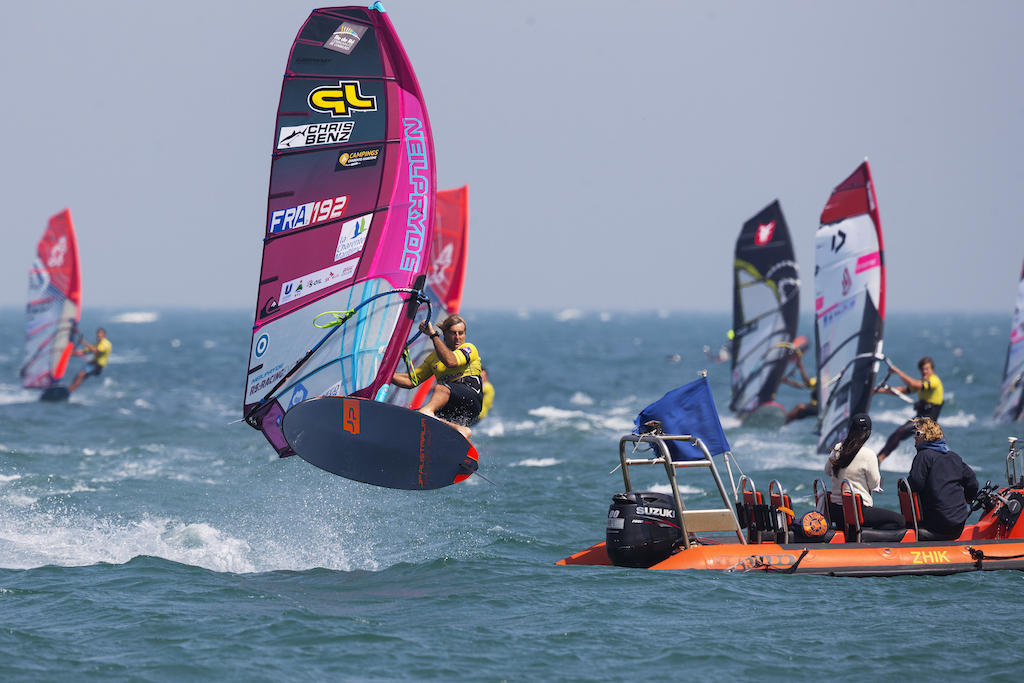
※The photos posted here are images. Not the one at the time.

